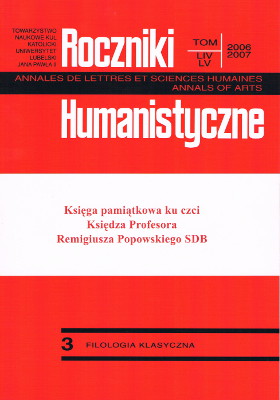Image of the Other World in Plato’s Dialogues
Abstract
The paper is a penetrating analysis of the character and function of the eschatological myth. Plato crowns his three dialogues: Gorgias, Phaedo, and Republic with various images of this myth. The theoretical basis for this analysis is L. Brisson’s Introduction à la philosophie du mythe, vol. I: Sauver les mythes (Paris: Vrin, 2005) and his solutions on the meaning and function of myth in Plato’s discourse. We assume that Plato understood myth as a discourse on the kind of reality that cannot be verified. Despite that the myth can be true, inasmuch as it is compatible with logical argument, concerning forms knowable by reason or the senses. Therefore, in all three dialogues the eschatological myth is subjected to an analysis in its strict relation to its preceding logical argument and functional concurrence has always been found between them. Despite the variety of images in the three representations of the myth, the same symbolical function has been found. They illustrate the interpenetrating cosmic, moral, and social orders based on the pillars of justice.
References
Brisson L.: Platon, les mots et les mythes, Paris: La Découverte 1982. Coll. Textes à l’appui / Histoire classique.
Brisson L.: Introduction à la philosophie du mythe, t. I: Sauver les mythes, Paris: Vrin 2005. Coll. Essais d’art et de philosophie.
GuthrieW. K. C.: A History of Greek Philosophy, vol. 4: Plato: The Man and his Dialogues: Earlier Period, Cambridge: Cambridge University Press 1975.
Mattéi J.-F.: Platon et le miroir du mythe, Paris: PUF 2002. Coll. Quadrige.
Copyright (c) 2007 Roczniki Humanistyczne

This work is licensed under a Creative Commons Attribution-NonCommercial-NoDerivatives 4.0 International License.





